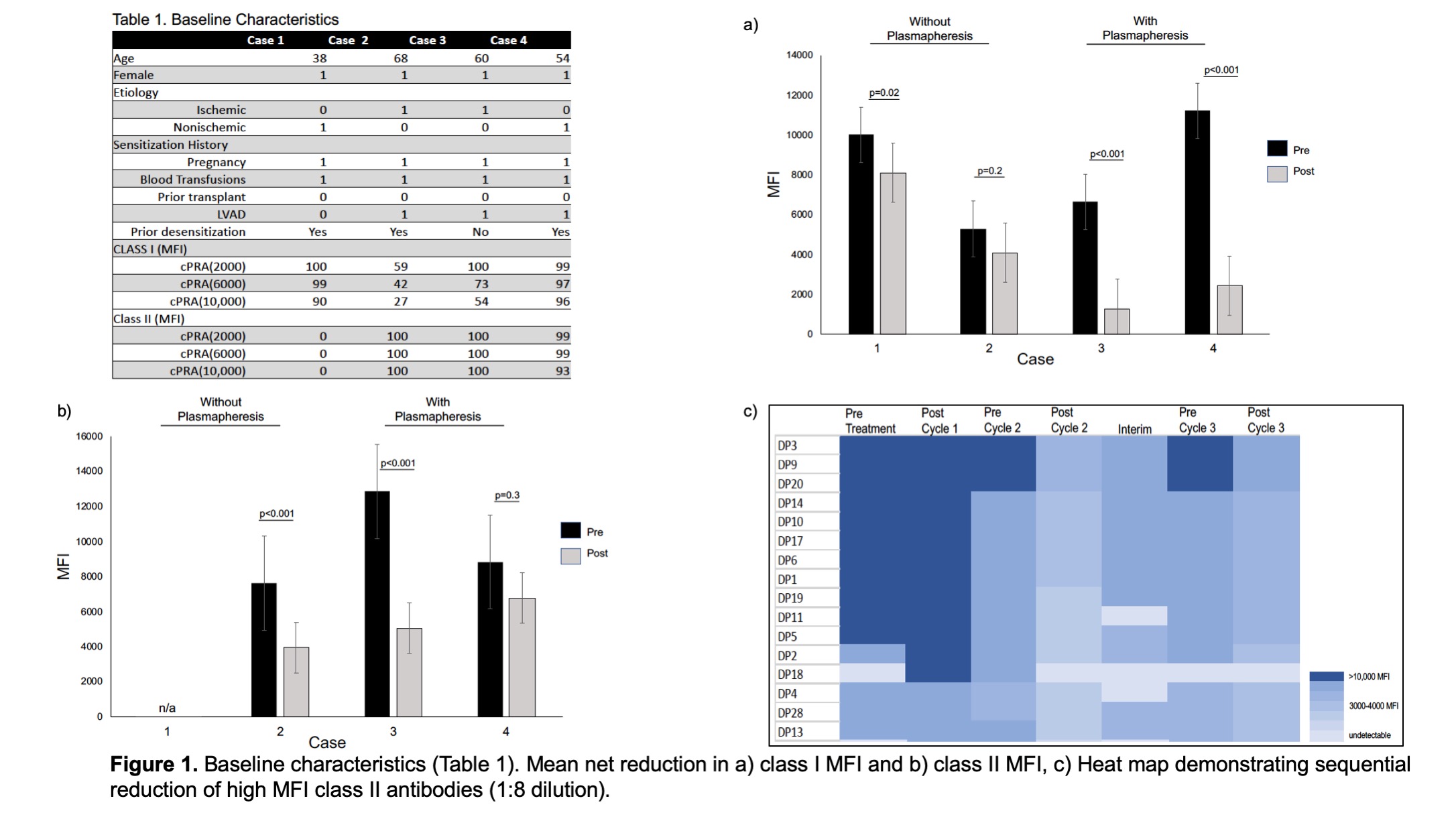Desensitization Combining Costimulation Blockade with Proteasome Inhibition in Highly Sensitized Transplant Candidates
1Cardiology, Columbia University Irving Medical Center, New York, NY, 2School of Nursing, Columbia University Irving Medical Center, New York, NY, 3Pathology&Cell Biology, Columbia University Irving Medical Center, New York, NY, 4Cardiothoracic Surgery, Columbia University Irving Medical Center, New York, NY
Meeting: 2020 American Transplant Congress
Abstract number: C-281
Keywords: Co-stimulation, Heart, Highly-sensitized, HLA antibodies
Session Information
Session Name: Poster Session C: Heart and VADs: All Topics
Session Type: Poster Session
Date: Saturday, May 30, 2020
Session Time: 3:15pm-4:00pm
 Presentation Time: 3:30pm-4:00pm
Presentation Time: 3:30pm-4:00pm
Location: Virtual
*Purpose: Antibodies to human leukocyte antigens (HLA) pose a significant barrier to transplantation. Strategies to reduce allosensitization have modest efficacy and may result in antibody rebound. Synergistic targeting of upstream germinal center (GC) responses with costimulation blockade (belatacept; CTLA4-Ig) and plasma cells using a proteasome inhibitor (PI) may increase efficacy and prevent rebound.
*Methods: Four highly sensitized (cPRA class I and/or II 90-100%, CDC PRA+, C1q+) heart transplant candidates were treated with belatacept and multiple cycles of PI (bortezomib and/or carfilzomib) therapy (Table 1). Plasmapheresis was added to enhance PI effects (2/4 cases). Anti-HLA antibodies were monitored by Luminex single-antigen bead (SAB) assay median fluorescence intensity (MFI), titres (1:8), C1q assay, and CDC PRA. CyTOF analysis was used to compare peripheral blood mononuclear cell (PBMC) subsets before and after desensitization.
*Results: The average MFI for both class I and II antibodies was markedly reduced in all cases, an effect that was augmented when plasmapheresis was added to enhance PI therapy (Fig 1a&b). Importantly, even high MFI, C1q+ antibodies responded to sequential cycles of treatment (Fig 1c) resulting in 4 negative CDC crossmatches (3 patients) against historic C1q binding antibodies. Preliminary CyTOF analysis comparing peripheral blood subsets before and after treatment in one case demonstrated alterations in PBMC subsets including a marked reduction in CD19+ peripheral blood B cells (Fig 2).
*Conclusions: We provide preliminary results of a synergistic approach to desensitization combining costimulation blockade with proteasome inhibition demonstrating successful reduction of anti-HLA antibodies and alterations in peripheral blood subsets.
To cite this abstract in AMA style:
Restaino S, Jennings D, Serban G, Vasilescu E, Sayer G, Uriel N, Takeda K, Naka Y, Farr M, Habal MV. Desensitization Combining Costimulation Blockade with Proteasome Inhibition in Highly Sensitized Transplant Candidates [abstract]. Am J Transplant. 2020; 20 (suppl 3). https://atcmeetingabstracts.com/abstract/desensitization-combining-costimulation-blockade-with-proteasome-inhibition-in-highly-sensitized-transplant-candidates/. Accessed December 31, 2025.« Back to 2020 American Transplant Congress


